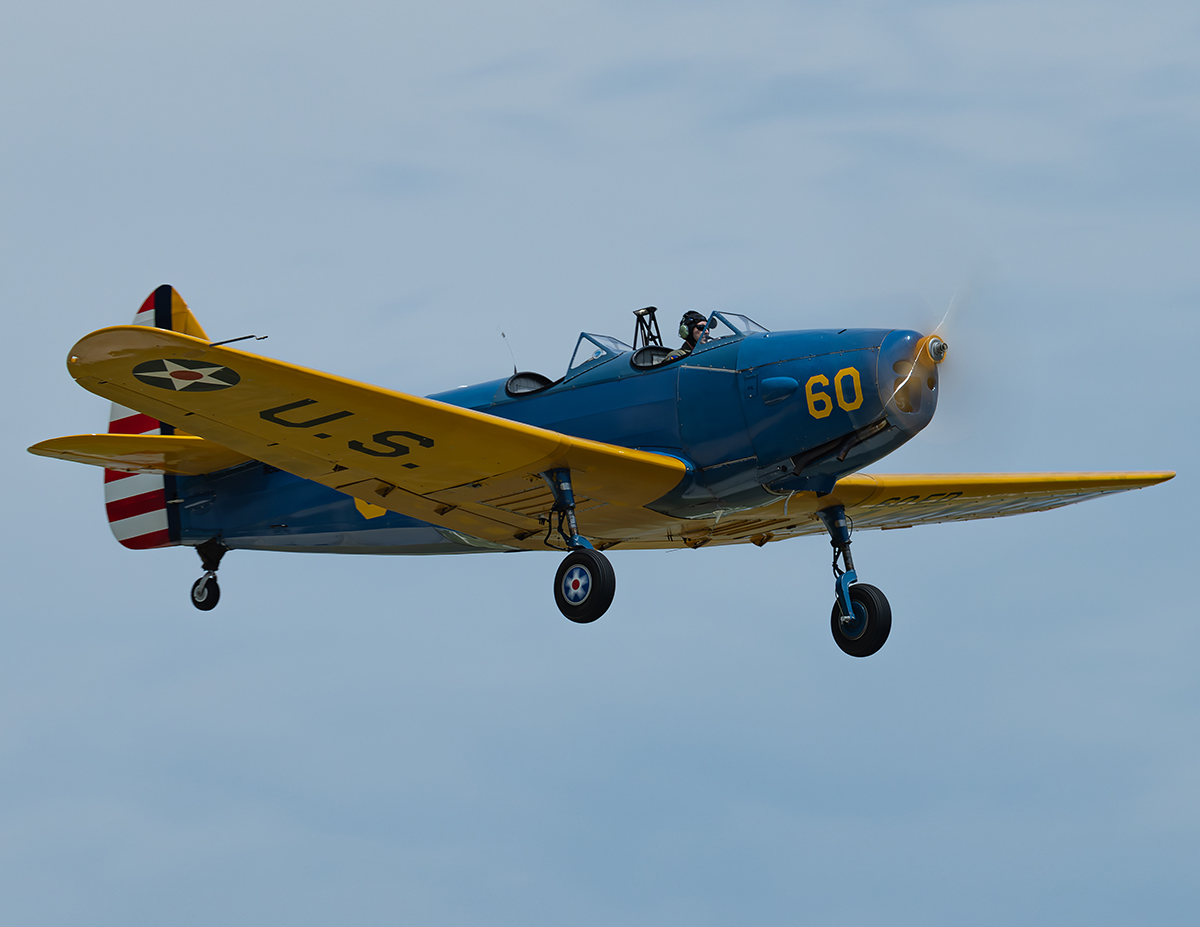Fairchild PT-19 (M-62A)
With the threat of war looming in the Pacific and Europe and reports from the Spanish Civil War and Japanese expansion into Korea and China, the US realized the age of the biplane was over. The US lacked a low-wing monoplane primary trainer, even though the advanced trainers of the time were of this type (AT-6, BT-13). In 1937, Fairchild Aircraft appointed Armand Thiebolt as the chief engineer of the PT-19. The design included a low-slung Ranger inverted inline-six engine, which narrowed the engine cowling and reduced the center of gravity, and a wide landing gear, allowing for better pilot visibility and reduced chance of ground loops. The design also used non-strategic material (fabric and plywood), so the production did not take away from front-line aircraft production. On May 15th, 1939, the PT-19 flew for the first time. Later that year, the PT-19 was selected out of 17 other aircraft to earn a government contract for 270. Fairchild enlisted the help of furniture stores, a foundry, and a hosiery plant to produce the airplane. After the outbreak of war, Fairchild licensed Fleet Aircraft, Howard Aircraft Corp, St Louis Aircraft Corp, and Aeronca to build PT-19s to keep up with demand. Throughout its lifespan, there have been several different variants. The PT-19A had a 200HP Ranger engine installed. The PT-19 B had more instrumentation and a collapsible hood for the front cockpit. The PT-19 also served as the basis for the PT-23 and the PT-26. The PT-19 became known as the “cradle of heroes” since it was the plane many top pilots would learn to fly in. The design more closely mimicked the combat aircraft of the time and was cheap and simple to maintain. This allowed the US to train more pilots faster than the Axis powers, leading to Allied air supremacy.

 Welcome to the Great Plains Wing
Welcome to the Great Plains Wing


